News Letter
Sign Up & get 33% off your first order
Enter your preferred name & e-mail to subscribe

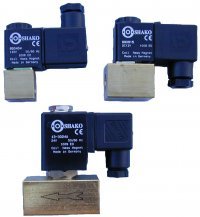
As we know, 12v solenoid valves are typically used for simple ON/OFF control of gas or liquid media. A basic brass 2/2 way solenoid valve (2 port 2 position) valve when fitted into a pipework system will control the flow of media flow or no flow. In the case of a normally closed (fail-safe closed) solenoid valve, when 12 volts are applied the solenoid valve opens allowing flow. When the 12 volts are removed from the solenoid valve, then the valve will automatically close and prevent flow along the pipe. For a normally open solenoid valve then the opposite is true, i.e. the solenoid valve fail-safe position is open and when power (12vDC) is applied the solenoid valve will power close. 12 Volt solenoid valves are typically found in commercial applications, boat gas and diesel lines, car protection systems i.e. anti theft systems on diesel + petrol fuel lines with remote ON/OFF battery powered systems.
Try our valve wizard and then select Voltage then choose 12vDC
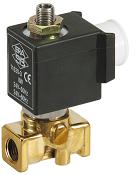
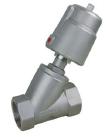
12 volt solenoid valves are used for automotive, boat, commercial, shower and public display systems such as water fountains and water curtain display systems, thus avoiding a potentially hazardous high voltage system with water or where no other voltage is available.
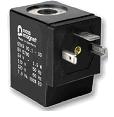
One way to avoid constant power drain when energising a 12 volt solenoid valve for long periods of time is to use a 12v latching 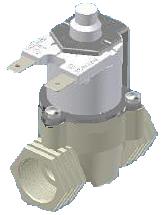
An example of latching solenoid valve function would be a fast power pulse of 12 volts to open the solenoid valve, the solenoid valve internal magnet keeps the solenoid valve open allowing constant flow without the need for electrical power supply. Now to close the latching solenoid valve the positive and negative terminals are swapped around, and the next power pulse cancels the magnetic field, allowing the solenoid valve to close and prevent flow.
When using 12 volt solenoid valves outdoors, be sure to cover the solenoid valve and protect it from the elements. Good quality solenoid valves will have an IP65 protection rating which means when installed correctly they are safe from even powerful water jets from any direction, however damp will ingress over time and can cause the coil to short circuit even after only 12 months.
Helpful hint: Weather proof the solenoid valve, have the cable entry from the ground upward into the electrical connector and clamped correctly onto the cable, fill the connector and sealing faces with some silicone sealant and try to shield the solenoid valve to reduce its exposure to the elements. In the long term this will save time and money.
Find any solenoid valve online at www.solenoid-valve.world
A catalouge of articles covering all aspects of solenoid valves
Enter your preferred name & e-mail to subscribe